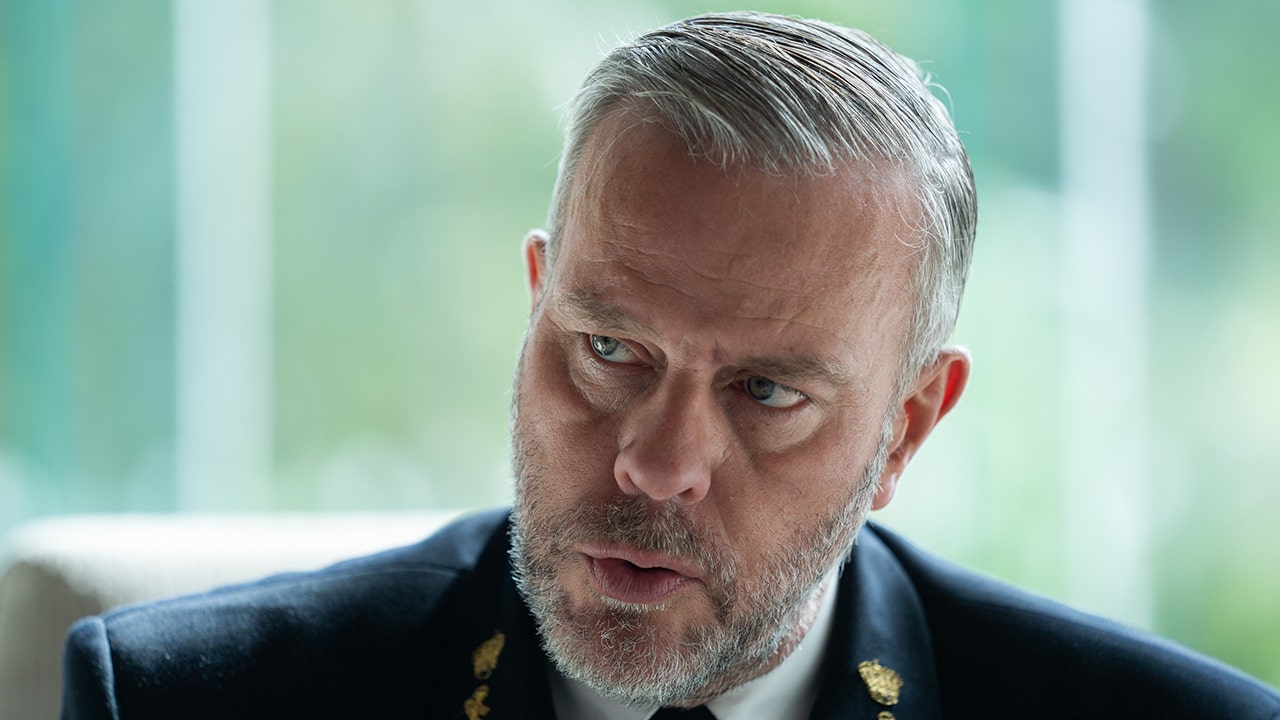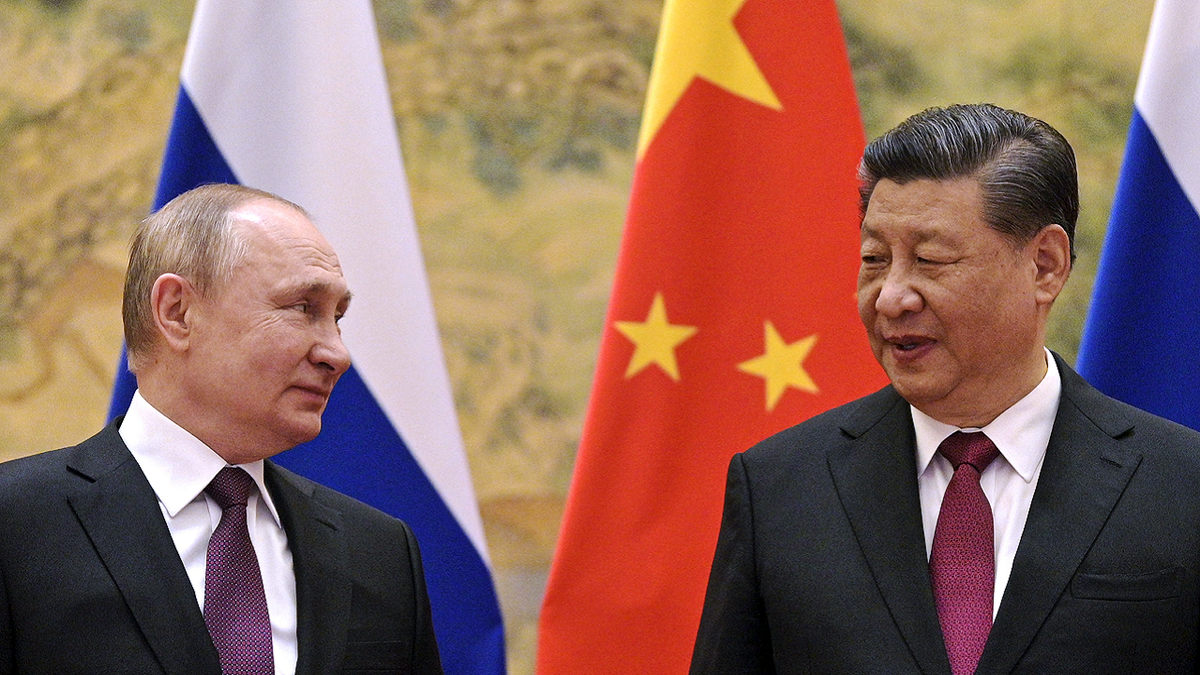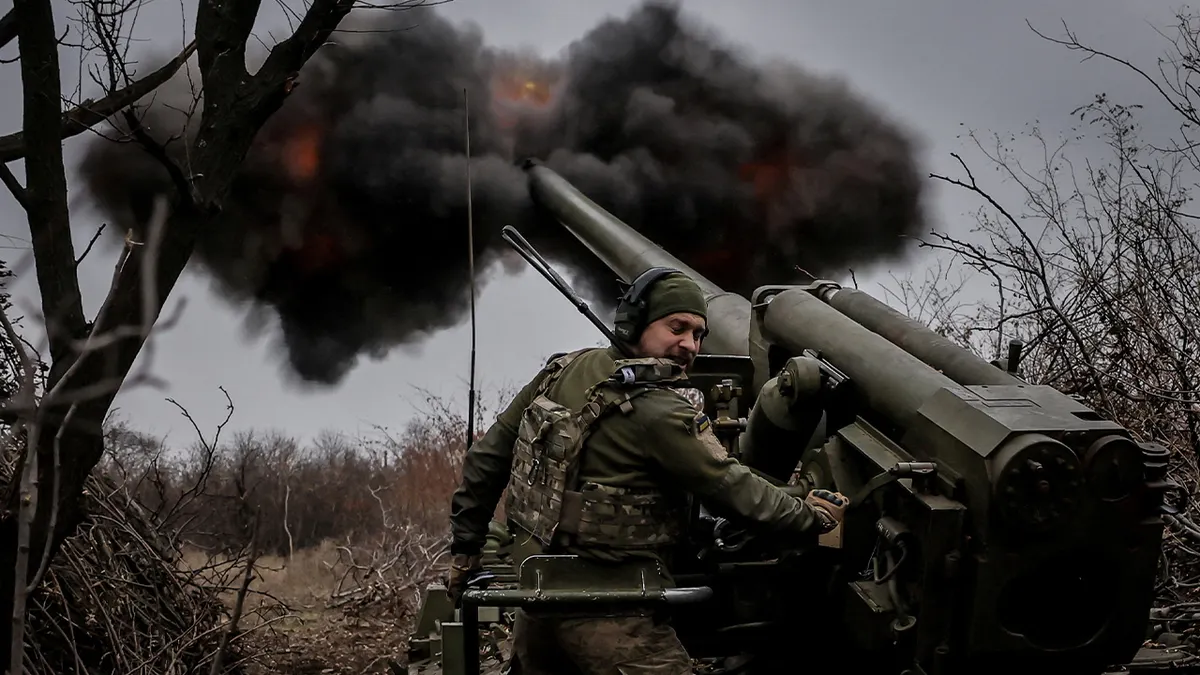World
Several stars at the Women’s World Cup honed their skills with US collegiate teams

WELLINGTON, New Zealand (AP) — Christine Sinclair. Megan Rapinoe. Sarina Bolden.
Like many players in the Women’s World Cup, all three stars built their skills at the U.S. collegiate level.
Of the 736 players competing at this year’s Women’s World Cup, 137 have roots in American college-level soccer, according to the NCAA. The total includes 16 players who currently compete for Division I schools or lower divisions.
Across the 32 teams that qualified for the group stage, more than one in every six players has had a career stop at an American school.
Not all the NCAA athletes in the tournament are tied to the United States.
Canada has 22 of 23 athletes who played or still play on U.S. college teams, most of any team in the tournament. That includes Sinclair, the the all-time leader in international goals for men and women, who played at the University of Portland.
The United States ranks second with 20 players. Rapinoe also played at Portland, but Alyssa Thompson, Trinity Rodman, and Lindsey Horan all turned professional without playing a college match. Horan also did play for a high school team.
More than 70 U.S. schools are represented in the 2023 tournament, with Florida State the leader with eight current or former players competing. Stanford and North Carolina each have six, Penn State has five and four universities have four former players.
Even schools with lesser-known soccer programs have players competing in New Zealand and Australia. Hilary Jaen of Panama plays for Jones County Community College in Mississippi, Carleigh Frilles of the Philippines plays for Coastal Carolina and Chiara Singarella of Argentina plays for South Alabama. Erin Nayler of New Zealand previously played at Purdue Fort Wayne in Indiana.
TITLE IX
The success of American college soccer can trace its roots back just over 50 years, with the introduction of Title IX. As the U.S. government required universities to establish equal opportunities for men and women in education, those protections – and funding – spread to college athletics.
“The U.S. was providing one of the only games in town so to speak, in terms of opportunities for women to get some kind of compensation,” said Ellen Staurowsky, a professor in sports media at Ithaca College.
Title IX drew female athletes from outside the United States to American schools. Since the passage of Title IX, the number of female athletes competing in NCAA athletics has increased seven-fold and currently represents 44% of all university athletes, according to the National Women’s Law Center.
NCAA TRENDS
In 2021, there were 1,464 international student-athletes playing in NCAA Division I and Division II women’s soccer.
Traditional soccer powerhouses such as Germany and Sweden are sending significant numbers of players to college soccer, even though they have developmental programs of their own. There were 114 from Sweden and 128 from Germany in 2021.
In that same year, NCAA teams had 38 players from New Zealand, 35 players from the Netherlands, 16 players from Japan, and 5 players from South Africa.
“Then you would see those women going back to their own countries, taking what they learned with them,” Staurowsky said. “And you can begin to see how the sport begins to expand out.”
Penn State women’s soccer coach Erica Dambach has seen the collegiate process up close for some time. She’s coached at the Division I level since 1997, won the national title in 2015, and worked as an assistant coach for the U.S. women’s national teams at both the youth and senior levels.
“Until these players are making millions, I think an education is going to be the most important thing for these young women,” Dambach said. “I don’t think it’s for everyone, you have to be invested in getting your education.”
THE AMERICAN SYSTEM
That can be easier than it sounds.
“Educational systems around the globe are so different that our international students really don’t know how to navigate the (U.S.) system,” said Nicole LaVoi, a former collegiate tennis coach and the director of the Tucker Center for Research on Girls & Women in Sport at the University of Minnesota.
Coumba Sow, a Swiss midfielder, attended Monroe Community College in Rochester, New York, for two years before transferring to play Division I soccer at Oklahoma State.
“I didn’t understand the system. I was in a rush to just go to the States,” Sow said. “I wanted to keep on learning a language and studying and also play soccer. It’s a lot of paperwork, so I just looked at the facility. I was like, ‘Oh, New York,’ and I went. Then I got there I was like, ‘OK, maybe I should have checked it out better.’”
For New Zealand forward Gabi Rennie, taking the pathway to Division I soccer was an easy decision after watching others succeed. Rennie is entering her final year of NCAA eligibility at Arizona State after spending two seasons at Indiana.
“I wasn’t too sure what to do. But obviously, the college circuit was a really good option,” Rennie said. “Being able to kind of look to the likes of Ali Riley and Katie Bowen and the likes of those girls that had done the college circuit was cool, and just opened those doors for me.”
A PROVING GROUND
Katrina Guillou, a starting forward for the Philippines, spent four years at North Carolina–Wilmington. Her time playing soccer in Wilmington was pivotal to her career.
“The way the season is, with everything so condensed into the three-month span, playing two games every week, I think it really helps build the stamina that’s needed,” Guillou said. “And coming to this level, I think I’ve been able to build on top of that.”
Like many others, Sow saw her experience with American teams impact her style of play.
“Before I went to the U.S., I wasn’t really a physical player,” said Sow. “I learned how to fight in the U.S. because it’s a lot, a lot of long balls. You have to fight for the second ball. And before, I was just a technical player.”
Jody Brown of Jamaica was named the best young players in CONCACAF at the age of 16 and now plays for Florida State.
“The coaches helped us,” said Brown of Florida State. “I feel like college also prepared me for this moment and I’m just so grateful for that and the work that I’ve put in to get to this point because it’s all paid off right now.”
___
Joe Lister is a student in John Curley Center for Sports Journalism at Penn State.
___
Contributing reporters included Luke Vargas in Hamilton and Max Ralph in Auckland, students in John Curley Center for Sports Journalism at Penn State; and Clay Witt in Sydney, a student at the University of Georgia’s Carmical Sports Media Institute.
___
AP World Cup coverage: https://apnews.com/hub/fifa-womens-world-cup and https://twitter.com/AP_Sports

World
Charles Oakley, MSG Still Sparring as Judge Weighs Dolan Testimony

A federal judge in New York last Thursday issued a mixed set of rulings in retired New York Knicks star Charles Oakley’s long-lasting litigation against Madison Square Garden Networks over Oakley’s removal from his seat at a Knicks game in February 2017. The rulings indicate that unless the parties reach a settlement, a dispute that began shortly after Donald Trump became the 45th president could last well into Trump’s term as the 47th president.
U.S. District Judge Richard J. Sullivan sided with MSG on its demand that MSG chairman James Dolan face deposition only after MSG personnel are deposed. Sullivan agreed with MSG that having Dolan go last would help to “narrow the scope” of Dolan’s deposition. The judge reasoned that MSG employees “who were directly involved in Oakley’s removal and thus have the knowledge most relevant to determining whether unreasonable force was used against Oakley” should go first.
The fact that MSG employees haven’t yet been deposed is partly a reflection of the litigation’s turbulent path. The case has been dismissed twice at the trial level but reinstated twice by the U.S. Court of Appeals for the Second Circuit, meaning it’s now in round three at the Southern District of New York. There are also disputed questions about key testimony and evidence that could further bog down the case. In the current version of the litigation, Oakley’s civil case is related to assault and battery claims stemming from his removal.
While Sullivan agreed Dolan would face deposition after MSG personnel, he sided against MSG’s request that Dolan not face deposition at all.
The judge explained that Oakley’s assault and battery claims “ultimately boil down to two considerations.” The first is the amount of force MSG staff used to remove Oakley from the Garden and, second, whether that force “was objectively reasonable under the circumstances.”
Oakley believes Dolan instructed staff to remove him. Sullivan reasoned that Dolan’s potential testimony is relevant in that he would have to answer under oath about whether he instructed—by words and/or “hand gestures”—the security guards to push Oakley and use excessive force. If Dolan gave an instruction to use force, his testimony, Sullivan wrote, “would support the reasonable inference that the guards followed Dolan’s instructions and would therefore make it more probable that the guards did in fact push him.”
Sullivan further observed that Dolan’s testimony is relevant to a key factual question: Whether the security guards “only resorted to force after Oakley physically escalated the situation.” Oakley’s case would be hampered by a finding that he instigated the altercation, since, Sullivan explained, “it might have been reasonable for the security guards to use greater force if Oakley was behaving aggressively.”
The judge was similarly unpersuaded that Dolan ought to be exempt from deposition on account of the apex-witness doctrine. As Sportico detailed in September when Sullivan rejected MSG’s earlier attempt to invoke this doctrine, high-ranking executives are sometimes exempt from depositions since they lack personal knowledge of key facts. In his latest ruling, Sullivan said Dolan “is not the prototypical apex witness who sits in the knowledge or involvement in the underlying conduct.”
Instead, Dolan literally “had a courtside seat to the action” and is accused of being involved in the incident. “The apex doctrine is plainly inapplicable here,” Sullivan insisted.
Sullivan also disagreed with MSG that Oakley is merely trying to depose Dolan to harass him. MSG cites text messages sent to Oakley from people urging the former player to go after Dolan, with one text saying Oakley should “sue the [expletive] out of Dolan.” Another text encouraged Oakley to use the discovery process to inflict a “public relations, social media, [and] social responsibility toll.” With negative attention stemming from the case, MSG might be more inclined to cut a deal. Sullivan didn’t find this evidence indicative of an intent by Oakley to harass, as there’s no evidence Oakley responded or otherwise endorsed the texts.
“We are pleased that the Court denied James Dolan’s latest attempt to avoid being deposed in this case,” Wigdor Law partner Valdi Licul, who is one of Oakley’s attorneys, told Sportico in a statement.
In September, the two sides told Sullivan their “present best estimate” was that a trial would take a couple of weeks. The judge at the time indicated there would be a post-discovery conference on March 4, 2025, though the parties’ recent disagreement about discovery suggests the case has a long way to go.
(In the next-to-last paragraph, Wigdor Law amended its original statement, replacing “to be excused from deposition in this case” to read “to avoid being deposed in this case.”)
World
Top NATO military official urges businesses to be prepared for ‘wartime scenario’

A top military official with NATO warned businesses on Monday to be ready for a wartime scenario, which could entail adjusting production and distribution lines to be less vulnerable to blackmail from Russia and China.
Dutch Admiral Rob Bauer, the chairperson of NATO’s military committee, told attendees at an event of the European Policy Center think tank in Brussels that all available instruments could be used during a time of war, according to a report from Reuters.
“If we can make sure that all crucial services and goods can be delivered no matter what, then that is a key part of our deterrence,” Bauer said.
He also said NATO is seeing a growing number of sabotage acts while Europe has seen the same when it comes to its energy supply.
UKRAINE TO ANALYZE FRAGMENTS OF MISSILE FIRED BY RUSSIA CAPABLE OF CARRYING NUCLEAR WARHEADS
Rob Bauer, chair of the military committee, warned business leaders to be prepared for a wartime scenario as tensions continue to escalate between Russia and Ukraine. (Ore Huiying/Bloomberg via Getty Images)
“We thought we had a deal with Gazprom, but we actually had a deal with Mr. Putin. And the same goes for Chinese-owned infrastructure and goods. We actually have a deal with [Chinese President] Xi [Jinping],” Bauer told the group.
The west, Bauer explained, depends on supplies from China, as 60% of all rare earth materials are produced, and 90% of those are processed there.
Also coming from China are chemical ingredients for sedatives, antibiotics, anti-inflammatories and low blood pressure medications, he further explained.
‘NEW’ RUSSIAN MISSILE USED AGAINST UKRAINE NOT HYPERSONIC, DEFENSE OFFICIALS SAY

Chinese President Xi Jinping, right, and Russian President Vladimir Putin talk to each other during their meeting in Beijing, China on Feb. 4, 2022. (Alexei Druzhinin/Sputnik/Kremlin Pool Photo via AP)
“We are naive if we think the Communist Party will never use that power,” Bauer said. “Business leaders in Europe and America need to realize that the commercial decisions they make have strategic consequences for the security of their nation.”
“Businesses need to be prepared for a wartime scenario and adjust their production and distribution lines accordingly,” he continued to stress. “Because while it may be the military who wins battles, it’s the economies that win wars.”
Bauer’s message comes as tensions between Ukraine and Russia continue to escalate.
1,000 DAYS OF WAR IN UKRAINE AS ZELENSKYY DOUBLES DOWN ON AERIAL OPTIONS WITH ATACMS, DRONES AND MISSILES

A serviceman of the 24th Mechanized brigade named after King Danylo of the Ukrainian Armed Forces fires a 2s5 “Hyacinth-s” self-propelled howitzer towards Russian troops at a front line, amid Russia’s attack on Ukraine, near the town of Chasiv Yar in Donetsk region, Ukraine November 18, 2024. (Oleg Petrasiuk/Press Service of the 24th King Danylo Separate Mechanized Brigade of the Ukrainian Armed Forces/Handout via REUTERS )
Last week, Russia launched an intermediate-range ballistic missile (IRBM) capable of carrying conventional or nuclear warheads, into Ukraine.
Ukrainian officials said the missile called Oreshnik — Russian for Hazel Tree — reached speeds of Mach 11 when it struck a factory in the city of Dnipro on Thursday.
While two U.S. officials told Fox News the missile was not hypersonic, deputy Pentagon press secretary Sabrina Singh told reporters on Thursday the attack was concerning and that it was the first time the missile had been used on the battlefield.
CLICK TO GET THE FOX NEWS APP
North Korea also sent at least 11,000 soldiers to fight in Ukraine alongside Russian soldiers, further escalating tensions.
Reuters contributed to this report.
World
Israel intensifies attacks on Lebanon but claims ceasefire deal ‘close’

Israel’s military launched air attacks across Lebanon on Monday, unleashing explosions throughout the country and killing at least a dozen people, even as officials claimed they were nearing an agreement on a ceasefire between Israel and Hezbollah.
Israeli attacks hit commercial and residential buildings in Beirut on Monday as well as in the port city of Tyre, where 12 people were killed – adding to the more than 3,700 people in Lebanon who have been killed by Israeli attacks in this two-month war.
Israeli officials said they targeted areas known as Hezbollah strongholds. They issued evacuation orders for Beirut’s southern suburbs, and attacks landed across the city, including metres from a Lebanese police base and the city’s largest public park.
Al Jazeera’s Zein Basravi, reporting from Beirut on Monday, said Israeli attacks across Lebanon in recent days were “more powerful, more destructive, more frequent and happening more often without warning – leaving people no time to get out of the way of Israeli missiles and drones”.
The barrages came as the Israeli ambassador to the United States said a ceasefire deal to end fighting between Israel and Lebanese group Hezbollah could be reached “within days”.
Ambassador Mike Herzog told Israeli Army Radio on Monday that there remain “points to finalise” and any deal requires agreement from the government. But he said, “We are close to a deal”.
Israeli officials said Prime Minister Benjamin Netanyahu’s security cabinet was set to convene on Tuesday to discuss a proposed ceasefire.
Israel’s ambassador to the United Nations, Danny Danon, said Israel would maintain an ability to strike southern Lebanon under any agreement. Lebanon has previously objected to wording that would grant Israel such a right.
The US has pushed for a deal to end over a year of hostilities between Iran-backed Hezbollah and Israel, which erupted in parallel with Israel’s war against Hamas in Gaza and has drastically escalated over the last two months.
In Beirut, Elias Bou Saab, Lebanon’s deputy parliament speaker, told the Reuters news agency there were “no serious obstacles” left to start implementing a US-proposed ceasefire with Israel, “unless Netanyahu changes his mind”.
He said the proposal would entail an Israeli military withdrawal from south Lebanon and regular Lebanese soldiers deploying in the border region, long a Hezbollah stronghold, within 60 days.
A sticking point on who would monitor compliance with the ceasefire had been resolved in the last 24 hours with an agreement to set up a five-country committee that includes France and is chaired by the US, he said.
But Bou Saab also accused Israel of ramping up its bombardment in order to pressure Lebanon to make concessions in indirect ceasefire negotiations with Hezbollah because “we are close to the hour that is decisive regarding reaching a ceasefire”.
After previous hopes for a ceasefire were dashed, US officials cautioned that negotiations were not yet complete and noted that there could be last-minute hitches that either delay or destroy an agreement.
“We have made significant progress with getting towards a resolution,” US National Security Council spokesman John Kirby told reporters. “But we are not done yet. Nothing is final until everything is final.”
The French presidency reported “significant progress” in talks on a ceasefire and urged Israel and Hezbollah to “seize this opportunity”.
One far-right member of Netanyahu’s security cabinet, National Security Minister Itamar Ben-Gvir, said he would oppose it. He said on X that a deal with Lebanon would be a “big mistake” and a “missed historic opportunity to eradicate Hezbollah”.
But hostilities continue to intensify despite the reported diplomatic progress. Over the weekend, Israel carried out powerful attacks, one of which killed at least 29 people in central Beirut, while Hezbollah unleashed one of its biggest rocket salvos yet on Sunday, firing 250 missiles into Israel.
Lebanon’s Health Ministry said Israeli attacks since October 2023 have killed 3,768 people in Lebanon and forced more than one million people from their homes.
Hezbollah strikes have killed 45 civilians in northern Israel and the Israeli-occupied Golan Heights. At least 73 Israeli soldiers have been killed in northern Israel, the Golan Heights and in combat in southern Lebanon, according to Israeli authorities.
Al Jazeera’s Basravi said that in past conflicts with Israel, there had been a surge of violence on both sides of the border, followed by a cessation.
“People are clinging to the hope that this is that moment,” he said.
-

 Business1 week ago
Business1 week agoColumn: Molly White's message for journalists going freelance — be ready for the pitfalls
-

 Science6 days ago
Science6 days agoTrump nominates Dr. Oz to head Medicare and Medicaid and help take on 'illness industrial complex'
-

 Politics1 week ago
Politics1 week agoTrump taps FCC member Brendan Carr to lead agency: 'Warrior for Free Speech'
-
/cdn.vox-cdn.com/uploads/chorus_asset/file/25739950/247386_Elon_Musk_Open_AI_CVirginia.jpg)
/cdn.vox-cdn.com/uploads/chorus_asset/file/25739950/247386_Elon_Musk_Open_AI_CVirginia.jpg) Technology1 week ago
Technology1 week agoInside Elon Musk’s messy breakup with OpenAI
-

 Lifestyle1 week ago
Lifestyle1 week agoSome in the U.S. farm industry are alarmed by Trump's embrace of RFK Jr. and tariffs
-

 World1 week ago
World1 week agoProtesters in Slovakia rally against Robert Fico’s populist government
-

 Health3 days ago
Health3 days agoHoliday gatherings can lead to stress eating: Try these 5 tips to control it
-

 News1 week ago
News1 week agoThey disagree about a lot, but these singers figure out how to stay in harmony

















